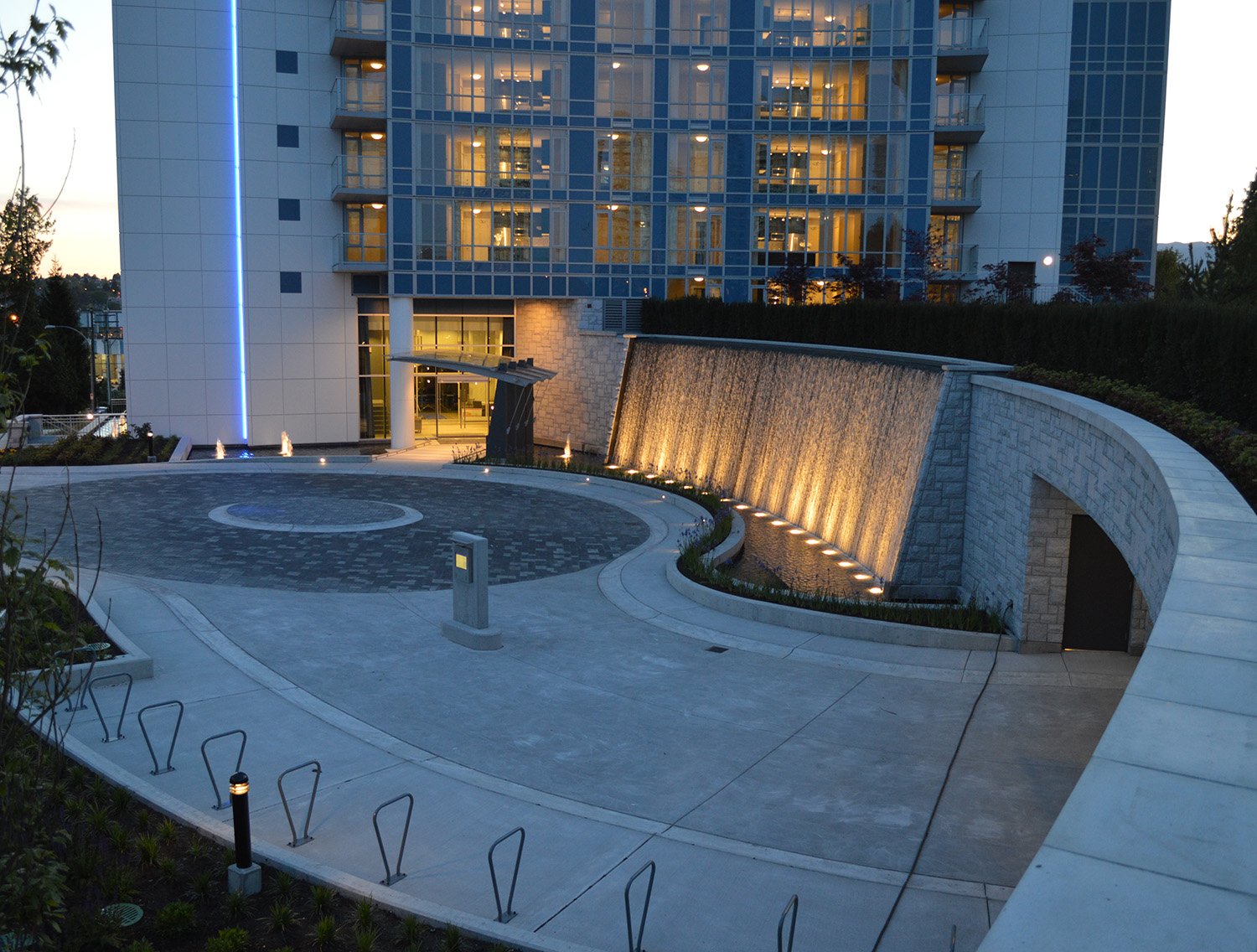Key considerations of incorporating Water Features into your Landscape design
Incorporating a water feature into your landscape design can add a sense of tranquility, visual appeal, and natural beauty to your outdoor space. Whether you're considering a pond, waterfall, fountain, or stream, here are the steps to help you successfully integrate a water feature into your landscape design:
The water feature at Ketcheson Neighbourhood Park At Concord Gardens is designed to be along the walkway to mimic a natural stream.
Determine purpose and location
Before diving into the design process, define the purpose and ideal location for your water feature. Consider the needs of the community and how the feature will enhance the surrounding environment. Choosing a location that is easily accessible and visible from prominent areas ensures that it becomes a focal point for relaxation and enjoyment.
Selecting a Water Feature type
Ensure that the water feature's design, materials, and style harmonize with the existing landscape. Options might include fountains, reflecting pools, interactive water displays, or even artistic installations. Ensure that the chosen design harmonizes with the architectural and natural elements in the vicinity. At Vincent Helton, we have experience with various water feature designs in diverse environmental settings. If you want to learn more about them please visit our blog: Five Design Varieties for a Unique Water Feature.
Consider scale and proportions
The size and scale of the water feature should be proportional to the available space and the anticipated number of visitors. Public spaces vary widely in size, so it's crucial to strike the right balance. Smaller areas may require more compact features, while larger plazas or parks can accommodate grander designs.
Water wall at Avaria, Burnaby
Select materials
Choose materials that are durable, low-maintenance, and aesthetically pleasing. Public water features are subjected to heavy use and varying weather conditions. Materials like stainless steel, concrete, or natural stone can withstand the test of time while contributing to the feature's visual appeal.
Plan water supply, drainage and mechanical system
This part requires specific mechanical and construction knowledge and need coordination with other professionals such as building engineering and architects. This process ensures the viability of the entire feature and we recommend you hire a professional to plan and design.
Plan lighting and plan the sound and other elements
Great lighting and sound go hand in hand in creating perfect water feature and need to be considered carefully. Certain types of water features have specific characteristics. For example, a waterfall makes a much louder sound than a water wall and therefore, cannot be placed to close to residential space.
Example of Splash Pad Rules - Rainbow Park. For additional details on your city's guidelines, please contact your local authorities.
Safety, ease of maintenance, local regulations
Public safety is paramount. Implement safety features such as non-slip surfaces, clear signage, and barriers where necessary.
Regular maintenance is crucial to keep the water feature in pristine condition. Make sure you design in a way that the features can be easily cleaned and maintained.
Lastly, ensure compliance with local regulations and obtain any necessary permits or approvals, such as water operating permits from the relevant authorities. Since regulations can vary significantly from one city to another, we strongly advise reaching out to your local authorities for guidance and compliance details.
In conclusion, complex water features often require professional assistance for plumbing, electrical work, and landscaping design. It's crucial to hire experts to ensure a successful installation and a safe final result. Proper circulation, filtration, and water quality maintenance are essential for the longevity of the feature and the health of the community.
Are you interested in creating a water feature? Let us bring your vision to life.



